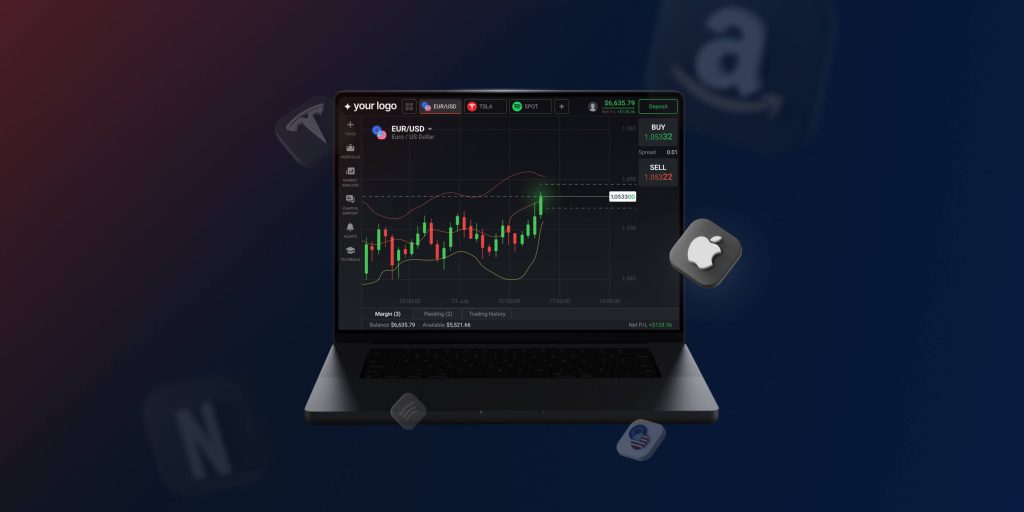
How Many Trading Days in 2026?
เนื้อหา
A calendar year consists of around 252 trading days. On the main stock markets, investors may purchase and sell several types of assets during this period. For traders, investors, and financial experts, who rely on calculations including returns and risk assessments, this number is significant.
The elements influencing the number of trade days - that is, the effect of holidays, the technique of computation used to determine these days, and the relevance of this number, are discussed in this article.
Since traditional market boundaries are becoming more hazy due to extended trading hours and the emergence of 24-hour crypto-equity platforms, precise trading-day computations are becoming even more crucial for risk-adjusted performance metrics in 2026.
In 2026, traders will increasingly depend on accurate trading-day counts to annualize algorithmic strategy returns as AI-driven portfolio optimization becomes more commonplace. For traders who employ structured methods, like trend-following futures systems or quantitative trading strategies, where the quantity of active sessions has a direct bearing on model calibration, this becomes particularly pertinent.
Understanding Trading Days
Any day that a stock exchange is open for business, usually Monday through Friday (excluding certain holidays), is considered a trading day. During the week, major American markets such as the NASDAQ and the New York Stock Exchange (NYSE) are open for business. They are not open on some holidays. This leads to 252 trade days annually, on average.
Even though official "trading days" are still linked to regular market hours, the SEC is still investigating after-hours liquidity enhancements in 2026, which could result in increased trading accessibility.
International investors also keep tabs on trading days in the APAC and EU markets, particularly as cross-border ETF flows hit all-time highs in 2026.
For traders who depend on market-session overlaps and liquidity cycles, these cross-market variations are significant, particularly when employing strategies akin to those employed in forex and CFD trading.
The number of trading days can change a bit based on the year and holiday arrangements. Typically 252 is considered the average. In the U.S. not all federal holidays lead to the stock market closing. While Veterans Day and Columbus Day see the market open, Good Friday despite not being a holiday prompts closure.
Nine holidays impact stock trading yearly. In 2026, the U.S. stock market will be closed on the following holidays.
- New Year’s Day: Thursday, January 1
- Martin Luther King Jr. Day: Monday, January 19
- Presidents’ Day: Monday, February 16
- Good Friday: Friday, April 3
- Memorial Day: Monday, May 25
- Juneteenth National Independence Day: Friday, June 19
- Independence Day: Friday, July 3
- Labor Day: Monday, September 7
- Thanksgiving Day: Thursday, November 26
- Christmas Day: Friday, December 25
When holidays fall on a weekend, the market closure is typically marked on the nearest weekday. When examining popular short-term trading setups or assessing market-maker-driven price behavior, traders also notice how these changes in holiday timing frequently affect liquidity conditions.
You may also like

Why Are There 252 Trading Days?
In the world of finance the standard figure of 252 trading days holds importance. It symbolizes the number of days when financial markets are active for trading in a year. This figure plays a role in annualizing returns, gauging volatility and conducting financial analyses. In order to compare performance across years and markets, experts in the field depend on this standard to guarantee consistency in their computations.
Modeling and algorithmic trading, where precision is key to making educated judgments, greatly benefit from the dependability of 252 trading days. By using this measure data, normalization is achieved, enabling evaluations of annual performance despite slight variations in actual trading days from year to year.
In 2026, a lot of quantitative funds base their models on the 252-day convention, highlighting its significance as trading based on machine learning expands.
This benchmark is even more crucial now that risk engines and volatility forecasting tools automatically normalize calculations to 252 days. Additionally, it serves as the basis for risk-adjusted models that are frequently employed in volatility strategies, systematic equity approaches, and futures trading.
How to Calculate Trading Days?
The number of days in a year is reduced by subtracting weekends and holidays. This is a basic explanation:
- There are 365 days in a standard year, and 366 in a leap year. To account for weekends, take 104 days off, which includes 52 Saturdays and 52 Sundays. Then, subtract the holidays. The nine holidays that occur when the markets are closed should not be included.
While the exact number of trade days could change from month to month, a typical count is 252. Due to its regularity and simplicity, this figure is frequently utilized in studies.
Are There Always 252 Trading Days?
While 252 trading days serve as the norm, it’s not a fixed quantity. Several factors can cause variations:
- Leap Years: In leap years the presence of an extra day might impact the number of trading days based on how weekends and holidays align.
- Holiday Variations: The count of trading days may fluctuate based on holiday placements. Market closures may be rescheduled to weekdays if a holiday falls on a weekend, thus affecting the count.
- Market-Specific Differences: Because each country’s holiday calendar varies, there is no globally recognized formula for the number of working days.
Regardless of these variations, the simplicity and stability of 252 trading days make it a useful reference point for financial calculations.
These differences also exist between asset classes; for example, correlation analysis between digital assets and traditional indices is impacted by the fact that cryptocurrency markets are open around-the-clock.
Historical Variations in Trading Days
The number of trading days has not always been constant. Throughout history various events, alterations in market practices and shifts in holidays have all influenced fluctuations in the trading schedule. Take, for example, the events of 9/11/2001 in the US. In 2001, there were less trading days because the markets were closed due to the terrorist attack.
Also, COVID-19 serves as an example. Though the stock exchanges continued to operate regularly in 2020 during COVID-19, the exceptionally high degree of market volatility and global anxiety prompted discussions about perhaps suspending markets or reducing trading hours. Though markets remained open, this highlighted how extraordinary circumstances can impact trading schedules.
In 2026, institutional risk models now include climate-related disruptions and digital infrastructure outages, which are uncommon but becoming more likely.
These days, regulators frequently release "event impact assessments" outlining the potential effects of extraordinary events on future trading schedules.
Moreover, variations in holiday observances can also influence the trading calendar. In the United States if a holiday falls on a weekend, market closures are typically shifted to the weekday slightly adjusting the count of trading days for that year. Over time these adaptations and responses to events have shaped a history of trading day changes, underscoring the importance for investors and traders to remain adaptable and mindful of external factors affecting market accessibility.
Impact of Trading Days on Investment Strategies
Investment techniques, from day trading to long term investing, are strongly impacted by the amount of trading days annually.
Trading days are essential for various trading techniques to execute transactions, manage investments, and make well-informed selections. Recognizing this impact can assist traders and investors in refining their methods and achieving results
Day traders, who focus on entering and exiting positions within a day, are impacted by the frequency of trading days in terms of leveraging market movements. A decrease in trading days caused by holidays or market shutdowns can restrict opportunities and necessitate adjustments in their strategies. Conversely, long term investors who prioritize holding assets over extended periods like months or years may not be fixated on the count of trading days, must still factor in how these days coincide with earnings releases, dividend payouts and other significant events.
Swing traders, who typically hold positions for days to weeks at a time, need to pay attention to trading days as interruptions between sessions (like weekends or extended holidays) can introduce risks due to potential market changes upon resumption of trading. For all types of investors, a devised strategy that considers the trading calendar ensures they are prepared for market closures or times of low liquidity.
Selecting the appropriate strategy, whether it be a long-term macro-driven approach, a swing strategy, or a breakout setup, is just as crucial for multi-asset traders as matching positions with the trading calendar.
Half-Day Trading Sessions
Half day trading sessions are events in the trading calendar when markets are open for a portion of the regular trading hours typically closing early. These sessions commonly occur on the day before holidays. In 2026 the stock market has scheduled half-day trading sessions on the following dates:
- Day After Thanksgiving: Friday, November 27
- Christmas Eve: Thursday, December 24
On these days, the market will close early, typically at 1:00 PM ET.
You may also like

They require traders and investors to adjust their approaches to accommodate the shortened trading period.
During a half day session markets may see lower or limited trading activity and decreased liquidity since many market participants might have already taken time off or are less active. Traders should exercise caution since this might lead to more volatility and more erratic price fluctuations. For instance, traders should be ready for more unpredictable price action as a result of lower market activity if they want to finish a position during a half-day session.
Half day sessions also affect order timing for those utilizing automated trading systems. These systems must be adjusted to consider the early market closure ensuring that orders are placed and executed within the abbreviated timeframe. Investors need to know when these shorter trading sessions happen and how they can impact trading behavior to make decisions and avoid surprises.
Effect of Non-Trading Days on Market Volatility
Non-trading days, such as weekends and holidays, can influence market volatility, particularly upon reopening. For instance, in 2025, the U.S. stock market was closed on Martin Luther King Jr. Day, which coincided with Inauguration Day on January 20. Such significant events during market closures may lead to increased volatility when trading resumes. During these times important global events, economic updates or geopolitical shifts can occur, potentially causing price changes once trading begins again. This situation, known as the “weekend effect” or “holiday effect ” can catch traders and investors off guard if they aren’t ready. Because implied volatility frequently changes significantly before and after long weekends, impacting both premium pricing and risk hedging, this reopening volatility is also crucial to options strategies.
When markets are shut down, participants cannot respond to news or changes in circumstances leading to pent up demand or supply that is unleashed once trading restarts. This could result in price swings, especially if the news is surprising or goes against market expectations. For example, traders can see price swings when the market reopens if a significant economic indicator shows a smaller than expected value during a holiday.
To minimize this risk, market players may change stop loss orders, lower position sizes, or avoid trading right before lengthy weekends or vacations. To protect their portfolios and take advantage of the possibilities given by these price changes, market players need to understand how non-trading days might affect volatility.
Planning Around Earnings Seasons
Earnings season holds importance in the trading schedule as traded companies disclose their quarterly financial performance. These disclosures can have an impact on stock prices resulting in increased volatility and trading volume. For traders and investors, planning around earnings season is crucial for risk management and capitalizing on potential opportunities.
During earnings season, the number of trading days and their alignment with report release dates become especially critical. Investors holding stocks in companies reporting earnings might witness price swings, depending on how the actual results compare to market expectations. Traders often utilize these periods to execute strategies like earnings plays positioning themselves based on anticipated market responses.
One strategy to avoid market volatility is for traders to close their holdings before earnings reports. Conversely, they might increase their exposure if they anticipate earnings results. Long term investors often focus on how earnings reports influence the market outlook, rather than short term price changes.
Understanding the dynamics of earnings season and its interaction with the trading calendar enables traders and investors to plan effectively. This preparation ensures that they can react promptly to results when they are announced.
Conclusion
In 2026, the number of trading days remains close to the standard 252, though variations can occur due to holidays and market closures. This figure is essential for traders, investors, and financial analysts as it serves as a benchmark for annualizing returns, evaluating market risks, and structuring investment strategies. This number holds importance in finance as it provides a basis for annualizing returns, evaluating risk and performing crucial financial assessments. Familiarity with calculating trading days and comprehending their significance along with considering variations, market volatility and earnings seasons is crucial for individuals involved in markets. These aspects form the foundation for metrics utilized in trading and investing endeavors. Combining calendar awareness with effective risk-management practices and structured trading strategies makes investing more robust and flexible for both systematic and discretionary traders.
FAQ
The standard benchmark for annualizing returns and modeling market performance is still 252 trading days in 2026, though the precise number will depend on how weekends and holidays fall.
Calculations of returns, volatility, and risk are impacted by trading days. Since many algorithmic and AI-driven strategies depend on accurate trading-day normalization to produce reliable performance metrics, this becomes even more important in 2026.
No. Every nation has a different holiday schedule, and cryptocurrency markets are open around-the-clock. As a result, different asset classes, geographical areas, and exchanges have different numbers of active trading days.
Indeed. Unplanned market closures can occasionally result from extraordinary events, such as severe weather, cyberattacks, or regulatory actions. This can slightly change the total number of trading days for that year.
อัปเดต:
24 ธันวาคม 2568




